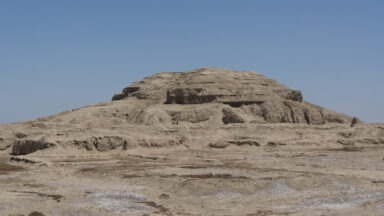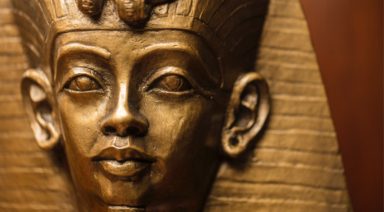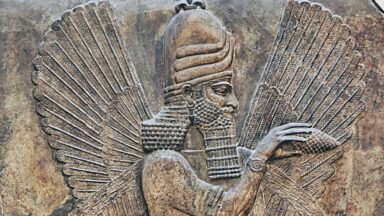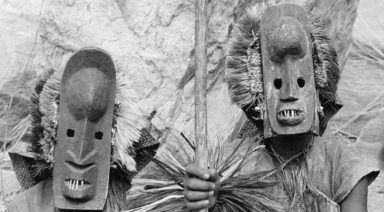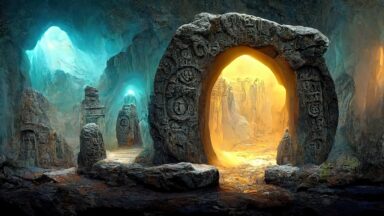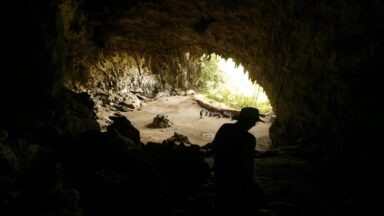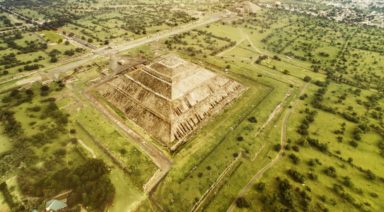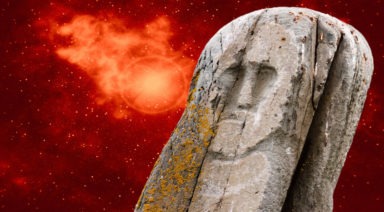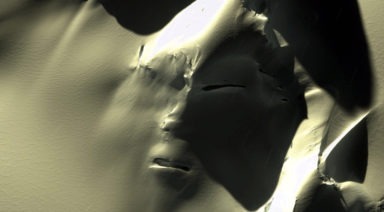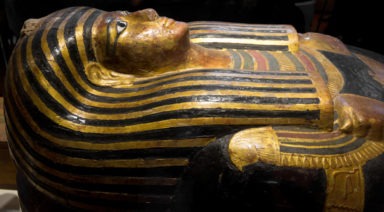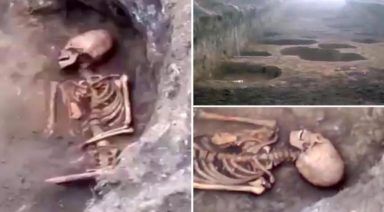Turkish Archaeologists Find Site Much Older Than Göbekli Tepe

Sitting eerily quiet upon an almost forgotten potbelly-shaped hilltop in the Southeastern Turkish countryside is an archaeological site that has caused heated debates among researchers, dreamers, and scientists. The mainstream scientific community remains reluctant to budge from the cemented ideas of academia regarding the possibilities of advanced cultures far older than believed possible. Literally written in stone, found in newly excavated digs, are the remains of a people we know little or nothing about, and now a new discovery has emerged that’s even older — by a thousand years or so — than Göbekli Tepe.
Smithsonian magazine noted that Göbekli Tepe (sometimes written as “gobekli tepe” or “göbekli tepe”) predates Stonehenge by 6,000 years and “upends the conventional view of the rise of civilization.” The site is regarded as early evidence of prehistoric worship, featuring unmistakable temples and stunningly carved stone monoliths.
German archaeologist Klaus Schmidt, who has been involved with the site for 25 years, is convinced that Goebekli Tepe is ground zero for the world’s oldest temple. Schmidt’s conclusions are evidenced by the site’s massive carved stones, about 11,000 years old, that was — perhaps erroneously concluded by mainstream academia — crafted and arranged by prehistoric people who had not yet developed metal tools or even pottery. Schmidt pointed to a cluster of great stone rings, one of which is 65 feet across, and said, “This is the first human-built holy place.” But is it?
Smithsonian magazine reported that Göbekli Tepe was examined and dismissed by University of Chicago and Istanbul University anthropologists in the 1960s who visited the hill, saw broken slabs of limestone and concluded the mound was simply an abandoned medieval cemetery. More than thirty years later, in 1994, Schmidt was read a brief mention of the stone-littered hilltop in the University of Chicago researchers’ report, and he decided to go there himself. He instantly realized the site was extraordinary.
The Debate Over Who Built Göbekli Tepe
An episode of Joe Rogan’s podcast, featuring Graham Hancock, garnered more than 3.5 million views on its episode about Göbekli Tepe, since it aired in 2017. For several hours, bestselling author and journalist Graham Hancock traded barbs with materialist science writer and founder of The Skeptics Society, Michael Shermer, over the deeper significance of the Göbekli Tepe find in Turkey. Weighing in on the discussion was Randall Carlson, geological explorer, and renegade scholar. At the heart of the ongoing debate is who built Göbekli Tepe and whether academia should rethink the antiquity of history and stop underestimating the cultural achievements and advancement of peoples who predated the esteemed ancient Greeks by millennia.
Hancock argued that Göbekli Tepe may be a clue to an advanced civilization that met its demise prior to its construction. Following an ancient cataclysm, survivors of an ancient civilization, few in numbers, may have taken refuge among hunter-gatherers and shared some of their knowledge with them, thus having had a hand in designing and building Göbekli Tepe. Hancock said, “Perhaps there’s been a forgotten episode in human history. Perhaps its fingerprints are present at a number of sites around the world… Perhaps the extremely defensive, arrogant, and patronizing attitude of mainstream academia is stopping us from considering that possibility, and therefore I campaign to get that possibility considered…”
Older than Ancient; Beyond Göbekli Tepe’s Neolithic Dates
And now, beyond Göbekli Tepe news, field workers have added another coal to the fire with their discovery of an ancient site that is at least a thousand years older. Excavations at Boncuklu Tarla in Southeastern Turkey’s Mardin province began in 2012 and have yielded what may be called an 11,300-year-old mini Göbekli Tepe — a Neolithic-era temple with three well-preserved monolithic stele structures. However, the stelae have no figurative inscriptions common to Göbekli Tepe. The temple walls were constructed of rubble and cemented with hardened clay. Scientists hope to reach at least some of the sacred building’s foundations by the end of the year.

Boncuklu Tara via dailysabah.com
The Daily Sabah, a Turkish newspaper reported that the archaeological excavations are being conducted by Mardin Museum Director Nihat Erdoğan and his team. Researchers are hoping to learn more about the cultures, social lives, and burial traditions of the people who lived in Northern Mesopotamia at least 10 millennia ago. The area of the excavation has been home over its history to Sumerians, Akkadians, Babylonians, Hittites, Assyrians, Romans, Seljuks, and Ottomans, among others.
Erdoğan said that the Neolithic period saw the establishment of the first sedentary society that led to controlled food production. The first phase of the period did not have baked clay vessels and baskets. Wooden or stone vessels were used instead of baked clay. This is the Aceramic Neolithic phase, in which artifacts have survived in only a few places in Anatolia. These have yielded examples of structures built according to a certain plan, with stone or bone tools and weapons, ornamental items and the first resident villages.
Archaeologist and advisor to the dig, Ergül Kodaş, Mardin Artuklu University, Turkey, said that the history and age of the site is “a new key point to inform us on many topics such as how the [people] in Northern Mesopotamia and the upper Tigris began to settle, how the transition from hunter-gatherer life to food production happened, and how cultural and religious structures changed.”
What Do We Know?
Certainly, the ancient sites at Göbekli Tepe and Boncuklu Tarla stretch the limits of academic preconceptions and conclusions. Some researchers, like Graham Hancock, Dr. Robert Schoch, and Randall Carlson, have been advocating for a change in paradigm among mainstream archeology. They entertain the possibility that there is evidence pointing to the possibility that there was a major global catastrophe at the end of the last Ice Age, caused by the impact of a comet. For many early people, this marked the end of the world as they knew it. The question is whether the few survivors could have intermingled with hunter-gatherers to create a new type of society and civilization.
Australian media outlet SBS, wrote, “The mainstream like to quash men like Hancock due to some of the more outlandish theories he put forward as a younger writer, but he remains steadfast in his belief that Tepe will force us to rewrite history, insisting the onus to get to the literal bottom of this whole situation is on the scientific community; that the truth lies within the vast remainder of untouched history waiting in the site’s belly.”
At this point in time, the site of Göbekli Tepe remains unexcavated, with about 90 percent of the site still underground, and Boncuklu Tara is also just now being uncovered. Only an open mind may yield a more accurate picture of the world as it was 12,000-plus years ago, perhaps changing the timeline of human history.
The City of Eridu is the Oldest on Earth, It's Largely Unexplored

Over the past decade, there have been a number of archeological revelations pushing back the timeline of human evolution and our ancient ancestors’ various diasporas. Initially, these discoveries elicit some resistance as archeologists bemoan the daunting prospect of rewriting the history books, though once enough evidence is presented to established institutions, a new chronology becomes accepted.
But this really only pertains to the era of human development that predates civilization — the epochs of our past in which we were merely hunter-gatherers and nomads roaming the savannahs. Try challenging the consensus timeline of human civilization and it’s likely you’ll be met with derision and rigidity.
Conversely, someone of an alternative persuasion may profess stories of ancient civilizations, such as Atlantis or Lemuria, with speculative mythology recounting a lost, golden age in human history that was surely responsible for building the pyramids and other wonders of the world. They point to the writings of Solon and Plato as evidence for these ancestors’ existence, which is exciting but difficult to corroborate without physical proof.
Researcher Matt LaCroix seems to find himself somewhere in the middle of these two perspectives. While he says he’s fascinated by the Athenian clues detailing the destruction of Atlantis, he finds more compelling evidence in ancient Mesopotamia, or what academia already acknowledges as “the cradle of civilization.”
It’s here we find the ruins of the most ancient city on Earth that we have physical proof of — the city of Eridu. This archaic metropolis is well-documented in historical texts covering ancient Sumer and the Babylonian empire, but there’s also a mythological component to Eridu that may imply human civilization is far older than we believe — significant orders of magnitude older.


